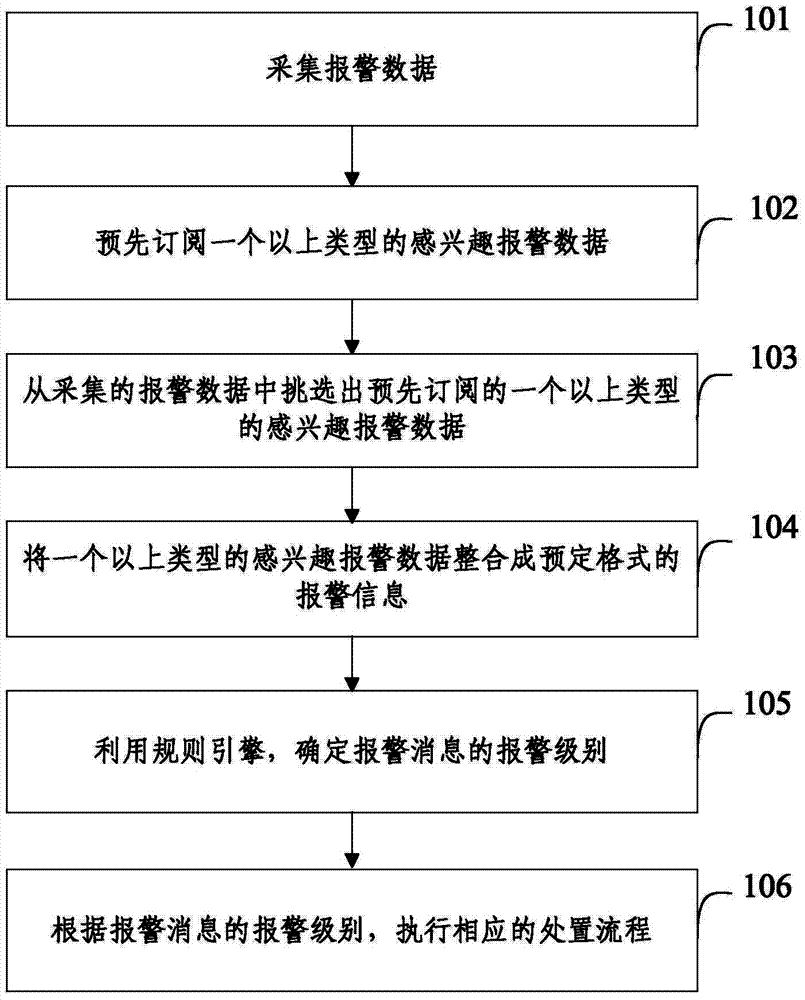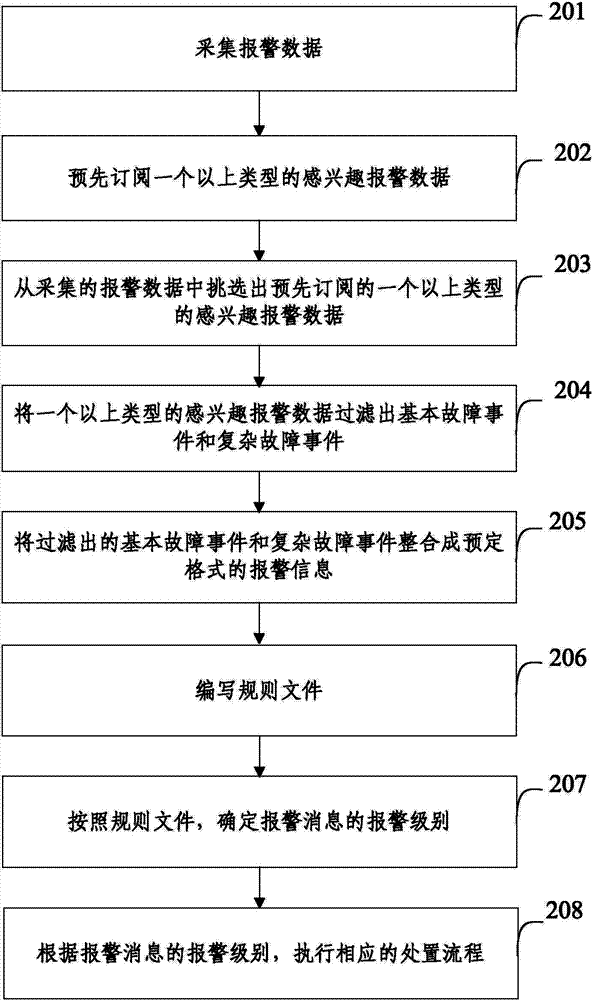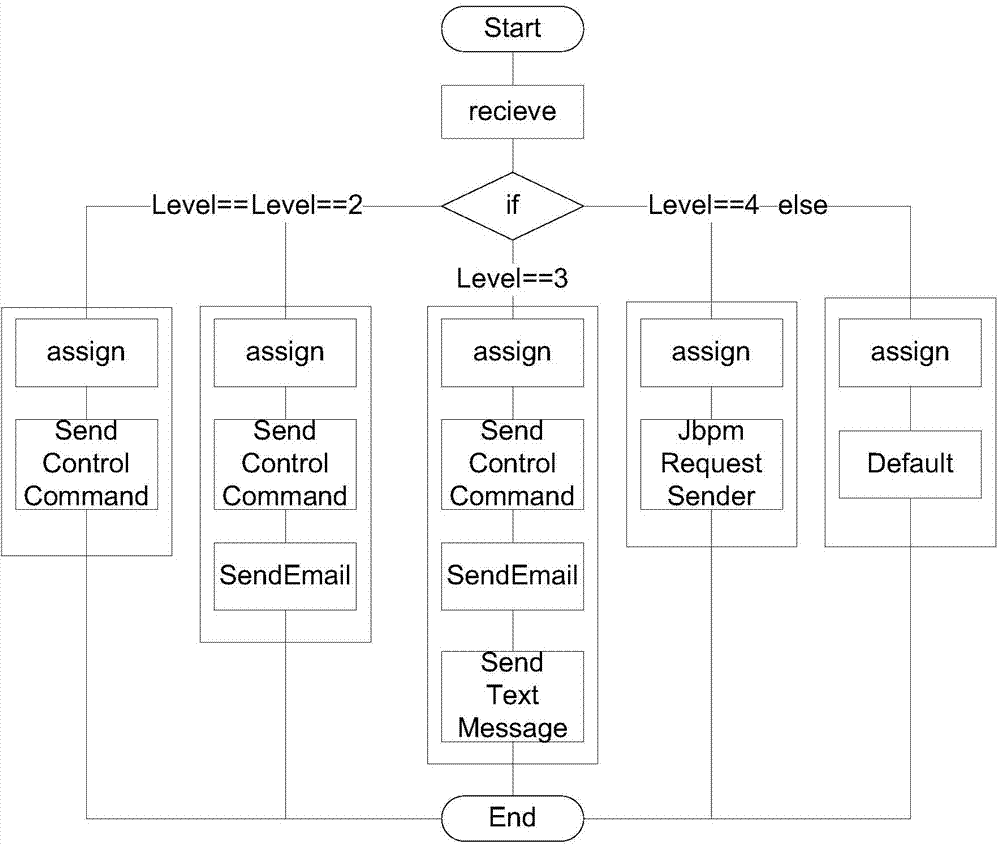Rule-based method and system for alarming of Internet of things
An Internet of Things and rules technology, applied in the field of Internet of Things, can solve the problems of high communication costs, business personnel do not understand programming languages, hidden dangers in the system, and achieve the effect of reducing the degree of coupling, facilitating business logic, and lowering the technical threshold.
- Summary
- Abstract
- Description
- Claims
- Application Information
AI Technical Summary
Problems solved by technology
Method used
Image
Examples
Embodiment 1
[0054]Embodiment 1 of the present invention proposes a rule-based Internet of Things alarm method, see figure 1 , the method includes:
[0055] Step 101: Collect alarm data.
[0056] Step 102: Pre-subscribe to more than one type of interested alarm data.
[0057] Step 103: Select one or more types of interested alarm data subscribed in advance from the collected alarm data.
[0058] Step 104: Integrate more than one type of interested alarm data into alarm information in a predetermined format.
[0059] Step 105: Use the rule engine to determine the alarm level of the alarm message.
[0060] Step 106: According to the alarm level of the alarm message, execute the corresponding processing procedure.
[0061] It can be seen that the embodiment of the present invention determines the alarm level of the alarm message based on the rule engine, and uses this highly readable and user-friendly rule to determine the alarm level, so that the alarm handling process can more flexibly ...
Embodiment 2
[0063] Embodiment 2 of the present invention uses an example to describe the implementation process of a preferred embodiment of the present invention in more detail, see figure 2 , the process includes the following steps:
[0064] Step 201: Collect alarm data.
[0065] In this step, various types of sensors on the device to be detected are used to collect original alarm data.
[0066] Step 202: Pre-subscribe to more than one type of interested alarm data.
[0067] In this step, more than one type of interesting alarm data is pre-subscribed, for example, two types of interesting alarm data, namely temperature alarm data and air pressure alarm data, are pre-subscribed.
[0068] Subscription-based message delivery can reduce the coupling degree of the system as much as possible, provide a transparent interface to the outside world, greatly reduce the complexity of the system, and make the entire system driven by messages.
[0069] Step 203: Select one or more types of inter...
Embodiment 3
[0103] Embodiment 3 of the present invention also proposes a rule-based Internet of Things alarm system, see Figure 5 , the system consists of the following:
[0104] The sensor unit 301 is used to collect alarm data;
[0105] The data distribution unit 302 is configured to select more than one type of interested alarm data subscribed in advance from the collected alarm data, and distribute the interested alarm data of one or more types to the data receiving unit 303:
[0106] The data receiving unit 303 is configured to integrate more than one type of interested alarm data into an alarm message in a predetermined format and send it to the determination unit 304;
[0107]The determination unit 304 is configured to determine the alarm level of the alarm message by using the rule engine, and transmit the alarm message with the alarm level to the execution unit 305;
[0108] The execution unit 305 is configured to execute a corresponding processing procedure for the alarm leve...
PUM
 Login to View More
Login to View More Abstract
Description
Claims
Application Information
 Login to View More
Login to View More - R&D
- Intellectual Property
- Life Sciences
- Materials
- Tech Scout
- Unparalleled Data Quality
- Higher Quality Content
- 60% Fewer Hallucinations
Browse by: Latest US Patents, China's latest patents, Technical Efficacy Thesaurus, Application Domain, Technology Topic, Popular Technical Reports.
© 2025 PatSnap. All rights reserved.Legal|Privacy policy|Modern Slavery Act Transparency Statement|Sitemap|About US| Contact US: help@patsnap.com



